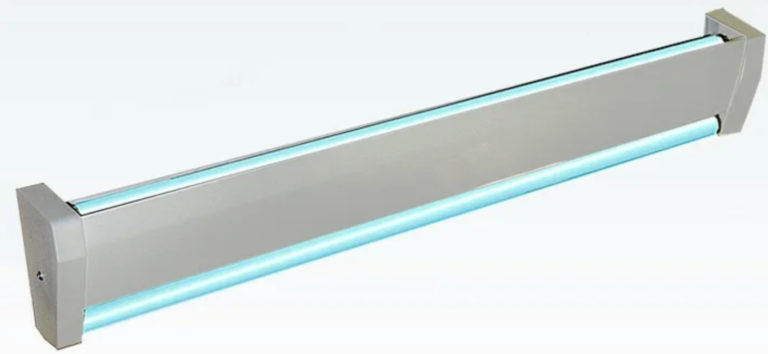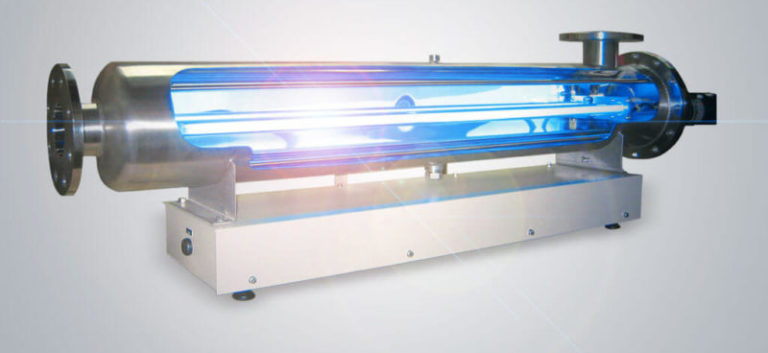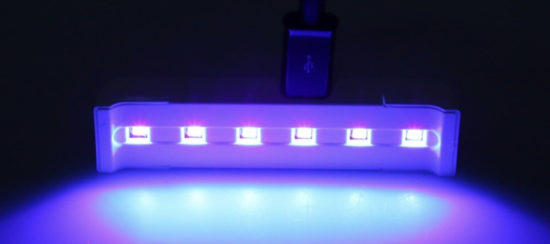Bactericidal LEDs
Ultraviolet is outside the range of 100-400 nm visible to the human eye. It is the short-wavelength solar spectrum between X-rays and visible light. Different types of UV chips are used for decontamination, in the production of cosmetics, food, and in forensic medical examinations.
UV chips are produced by adding an additive to semiconductor materials. Usually gallium arsenide is used. It produces infrared light. The emission of UV diodes helps to prevent the spread of coronavirus, so they are now often used in hospitals.
How UV disinfection diodes work
The principle of operation of UV diodes has much in common with standard SMD chips. But here the additives are responsible for the characteristics of the radiation:
- AIN - Aluminonitride;
- AlxGa1-xAs - aluminum gallium arsenide;
- InN india - binary combination of nitrogen and indium;
- GaN (gallium nitride) - gallium and nitrogen.
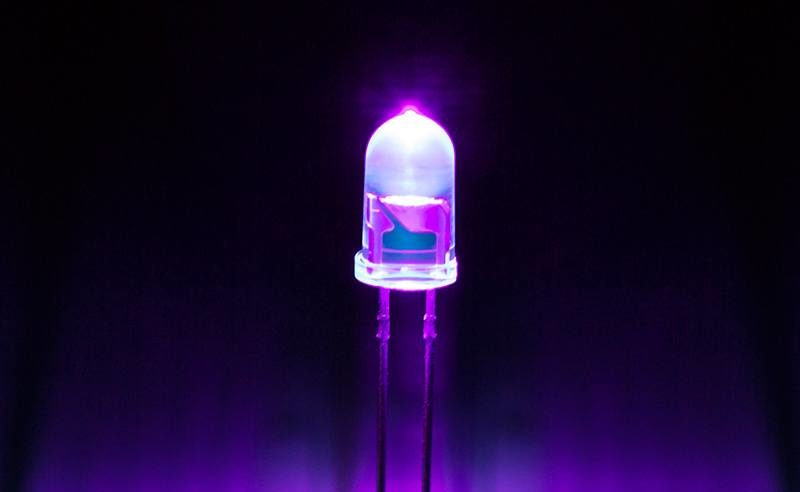
The source of light is a crystal with a p-n junction. Inside it there are processes of recombination of electrons and formation of photons. The range of emission depends on the specific manufacturing material and chip type. Diodes with a wavelength of 370-400 nm are considered the most popular because of the ease of manufacture and affordability.
Diode characteristics
Ultraviolet germicidal LEDs have the following technical parameters:
- operating duration under normal operating conditions - 50,000 hours;
- operating current for weak and chip - 20 mA, for high-power elements - 400-700 mA;
- Possible wavelength - from 100 to 400 nm;
- voltage - 3-4 V;
- flux intensity - 500-4500 mCd;
- angle of radiation - up to 120 °;
- maximum heating - 60 ° C;
- permissible operating temperature - from -20 C° to +100 C°.

The device operates at a standard current from a standard 220 V power supply.
Advantages and disadvantages
If you replace the discharge lamps with LEDs in the disinfection units, it will provide the following advantages:
- The power can be adjusted in a wide range due to the presence of a dimmer;
- Due to the compact size of the chips the radiation is precisely fixed on the disinfected object;
- It is possible to create a source with an effective wavelength of 270 nm. This will provide high mechanical strength and reduce the weight of the unit;
- The unit operates without mercury;
- start-up is instantaneous as compared to standard systems;
- Diodes work in the long-wave range, so ozone emission is impossible
- no exhaust air pipes are needed; the unit is water-cooled;
- some models are equipped with LEDs emitting mixed wavelengths.

Diodes allow for a compact disinfecting unit with fewer limitations when compared to standard germicidal lamps. By adjusting the power, the unit can be used in rooms where people are present without negative effects on health.
Among the disadvantages of UV chips are:
- Adjusted coverage is often expensive;
- lower efficiency when compared to medium-pressure lamps;
- dyes suitable for the lamps react to sunlight;
- UV luminescence is focused only with special lenses;
- one of the damaged elements can not be replaced in all installations;
- In water-cooled systems, condensation may form inside the chamber. This will provoke an accumulation of microorganisms in the cooling system.
Recommended for viewing: 100 ultraviolet LEDs for 100 rubles
How to properly use ultraviolet LEDs
Improper operation of the LED lamp will not lead to the desired effect. In this case, the owner may have a false impression of the effectiveness. Also do not forget about the wasted wear and tear of the device and the consumption of electricity. One of the common mistakes when using the installation is improper placement without regard to airflow movement. In most cases, a door and window form the line.
Before you purchase and turn on the unit, you should read the specifications and service life to evaluate effectiveness. You should make a schedule of switching on and off.
If a person with an SARS has been in the apartment, the following steps should be taken to sterilize:
- Before cleaning begins, everyone should leave.
- Conduct a wet cleaning.
- Ventilate the room for at least 15 minutes.
- Turn on the unit for half an hour.

When you finish, ventilate the room for 5 minutes. Repeat the cleaning process 1 more time during the day.
Scope of application
Until recently, UV LEDs were used in the same areas as ultraviolet lamps. But they win due to their compactness, greater range of radiation, and energy savings. One of the compelling advantages is their long service life. UV diodes are used in the following areas:
- Pharmacology. In the manufacture of pharmaceuticals;
- In manicure salons. Ultraviolet lamps are effective in drying gel-lacquer and nail extensions with gel compositions;
- manufacturing and industry. When working with composite compositions, which polarize and harden under ultraviolet light;
- medicine. For decontamination of premises.
- Banking. The lamp helps to determine the authenticity of banknotes, read the marks of banks on paper.
- Criminalistics. Used in operational activities to detect traces, biological fluids and particles.

Applications for bactericidal LEDs are added to the list every year. Many countries are researching and testing the health effects of ultraviolet light. Perhaps the rays will be used to counter cancer.
For home
It is recommended to buy devices in the medium price range. Cheap lamps are not always safe. It is worth knowing how long to leave the lamp on, based on the size of the room. For example, in a room of 20 m3 lamp should be left on for at least 20 minutes.
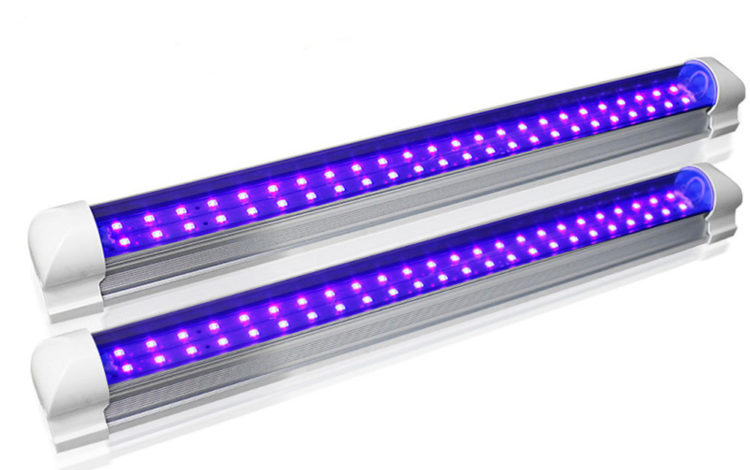
By design, the devices are either closed or open type. Open ones are placed on a tripod, wall or ceiling. Closed-type devices are less popular. Chips effectively fight viruses, kill fungus and mold in damp places, disinfect the storage of fruits and vegetables.
Conclusion
Disinfecting LEDs effectively fight viruses and bacteria. But if you use the device incorrectly, you can harm your health. Before using the UV LEDs, read the instructions and safety precautions.
